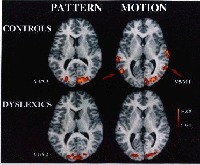Always,
Priscilla |
The Dyslexia Game |
|
|---|---|---|
|
Dyslexia Game
|
My first project had to do with handwriting being removed from elementary curriculum due to the increased reliance on the computer and the negative affect it might have on people with dyslexia. My first project had to do with handwriting being removed from elementary curriculum due to the increased reliance on the computer and the negative affect it might have on people with dyslexia. The act of handwriting, the flowing connection of letters, is an action that counters dyslexia and is actually used as a therapy model. I wondered if there would be repercussions, perhaps a rise in undiagnosed dyslexia, and if the educational authorities had taken it into consideration when they had made their decision. the possible repercussions of removing handwriting h removing handwriting would ultimately lead to Through my research I learned that when a brain learns to read, it does so by visually identifying individual shapes (letters), assembling them in order, and relating them to a mental image of an object or meaning. Reading is very difficult for someone with dyslexia, because in a "dyslexic brain", the shapes may appear to be backwards, inverted, or even to jump around. When someone with dyslexia writes, they may also invert, reverse or misplace the letters. The example below shows how the word 'cat' might be written:
The word 'music' could be written in any of these ways:
This is due to an
unusually processing in various
It is so challending for someone with dyslexia to read, while for the average student it is something that beccomes effortless. I thought it would be interesting for the class to participate in a game where they had to try to read words as they might appear to someone with dyslexia. I divided the class into teams and they received points for reading the word or sentence first. I started with easy words (example below) and moved into more complicated sentenses.
It was fun, andin the end the class wanted to try even more difficult sentences. It was a good way to think about and discuss learning challenges, current diagnosis and treatments, and possible future treatments or solutions. |

 (Amazing)
(Amazing)